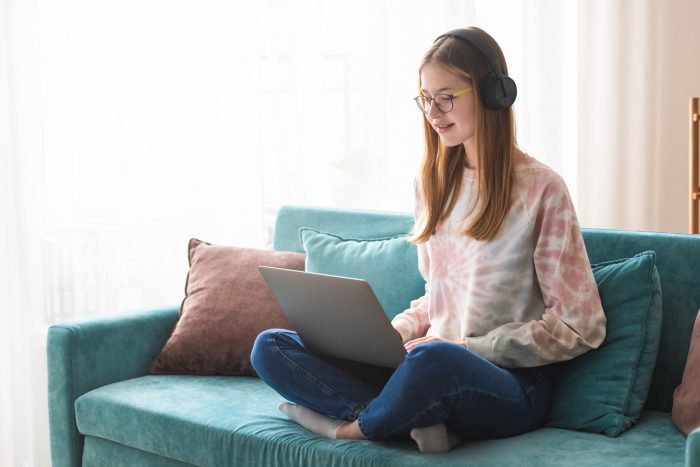
This past year, as many individuals sought health care through telemedicine, a question formed in Dr. Gina Sequeira’s mind. As the co-director of the Gender Clinic at Seattle Children’s, her mission is to make gender-affirming care accessible for all youth, and so the capabilities of telehealth are rightfully an exciting new territory to explore. With the growth of telemedicine and its potential to improve access to care, Sequeira wanted to better understand gender diverse youths’ experiences with and satisfaction receiving virtual care during the COVID-19 pandemic.
Published in Transgender Health, Sequeira, the lead author, found the majority of youth who participated in the study were satisfied with telemedicine and would be willing to use it again in the future. Although many said they preferred in-person visits, about 88% of gender diverse adolescents were satisfied with conducting gender clinic visits using telemedicine.
“Telemedicine has been a great way for us to support gender diverse youth and their families during the pandemic. Because of the limited number of pediatric gender-affirming care providers in the region, prior to the pandemic, many families experienced geographic and cost related barriers to receiving this care. We are hopeful that by continuing to offer gender clinic visits over telemedicine we will be able to overcome some of those barriers.” Sequeira said.
In the U.S., about 2% of high school aged youth identify as gender diverse, meaning their gender identity differs from the sex they were assigned at birth. According to Sequeira, providing gender diverse youth with access to supportive environments and care is critically important, particularly given the significant mental health disparities this group faces.
Improving access
Across specialties within Seattle Children’s telemedicine has increased. According to Dr. Mark Lo, Seattle Children’s has seen more than a 1000% increase in telehealth patient volume in the last year. For kids ages 14 to 17, the Gender Clinic has seen an increase in telemedicine appointments as well, with more than 246 unique patient visits within the last five months.
“I see a future in telemedicine,” said Sequeira. “We were really encouraged by the number of young people who were satisfied with receiving care this way. It gives me hope that this may be one way for us to decrease some of the barriers, like location, many youth face to receiving gender affirming care.”
Nearly 30% of the study participants noted they have traveled more than an hour to receive gender affirming care.
Findings from the study are promising, but there is more work that needs to be done to improve access to care for youth. For Sequeira, telemedicine is just one piece of that complex puzzle.
“There is a lot healthcare providers and health systems can do to make environments safer for gender diverse youth,” she said. “It’s really important that we ask ourselves, how can we make these spaces and interactions more welcoming for gender diverse youth?”
Sequeira says this study opens the door for future research to better understand how technology can transform care. Many themes emerged from this initial pilot study that will need to be addressed further, including privacy concerns and hesitations regarding camera usage.
Sequeira says she is hopeful for the future and is excited to explore more ways to use technology to support gender diverse youth and their families.

